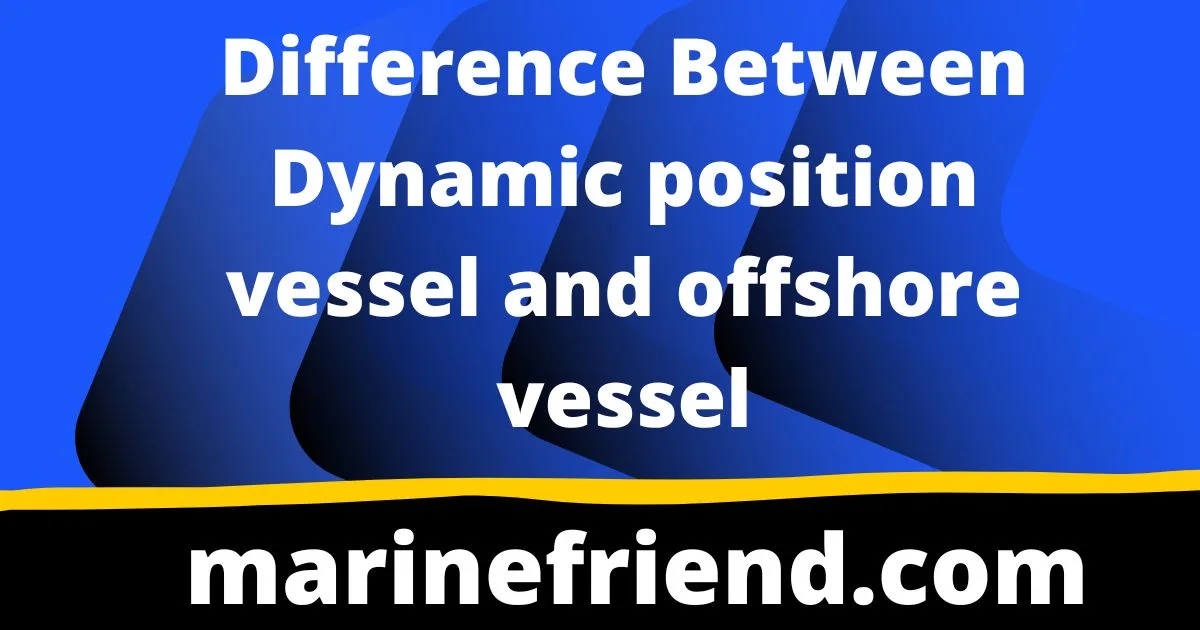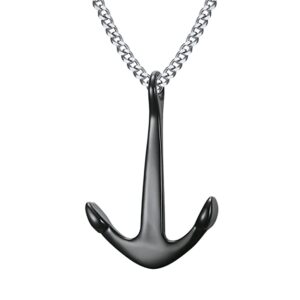MARINE FACTS
Difference Between Dynamic position vessel and offshore vessel

Difference Between Dynamic position vessel and offshore vessel
Dynamic Positioning Vessels (DPVs) and Offshore Vessels are both used in the offshore oil and gas industry, but they serve different purposes and have different capabilities.
Dynamic Positioning Vessels are specialized vessels equipped with a computer-controlled system that allows the vessel to maintain its position and heading without the use of anchors. This makes them ideal for operations such as underwater construction, cable laying, and drilling, where a steady position is crucial.
Offshore Vessels, on the other hand, are more general-purpose vessels used for a variety of tasks in the offshore oil and gas industry, such as transportation of personnel and equipment to and from offshore platforms, as well as supply and support of offshore drilling operations. Some offshore vessels are equipped with Dynamic Positioning systems, but this is not a requirement for all offshore vessels.
In summary, while both DPVs and offshore vessels play important roles in the offshore oil and gas industry, DPVs are specifically designed for operations that require precise positioning, while offshore vessels are more versatile and can be used for a range of tasks.
Dynamic Positioning Vessels typically have a larger number of thrusters and more advanced control systems than offshore vessels. This allows them to hold their position in challenging sea conditions and make quick changes to their heading if necessary. DPVs also have specialized equipment such as umbilicals, subsea cranes, ROVs and other specialized tools that allow them to perform various underwater operations.
Offshore Vessels, on the other hand, have a more general-purpose design and are usually equipped with cargo holds and deck space for transporting equipment and supplies. They may also have cranes and other specialized equipment, but their primary focus is on transport and support. Offshore vessels can range from small supply boats to large multi-purpose vessels.
In conclusion, while both DPVs and offshore vessels play important roles in the offshore oil and gas industry, it is important to choose the right type of vessel for each specific operation. DPVs are best suited for operations that require precise positioning and specialized underwater equipment, while offshore vessels are more versatile and can be used for a range of tasks such as transportation and supply.
It is worth noting that the design and capabilities of both DPVs and offshore vessels continue to evolve, with new technology and innovations allowing for even more advanced and specialized vessels. For example, some DPVs are now equipped with hybrid power systems, which allow them to operate more efficiently and reduce their carbon footprint.
Another important factor to consider when choosing between a DPV and an offshore vessel is cost. DPVs are typically more expensive than offshore vessels due to their specialized design and advanced equipment, but the cost can be justified by the benefits they provide in certain operations.
ALSO READ:OFFICIAL DG WEBSITE
Difference Between Dynamic position vessel and offshore vessel

In addition, the crew and personnel on board a DPV or an offshore vessel also play an important role in the success of an operation. DPV crew members are typically highly trained and experienced in dynamic positioning operations, while offshore vessel crew members are more generalists with a broad range of skills.
In conclusion, there are many factors to consider when choosing between a DPV and an offshore vessel, including the specific needs of the operation, cost, and the experience and skills of the crew. By carefully considering these factors, companies can ensure that they choose the right type of vessel for each operation, leading to greater efficiency, safety, and success.
It is also important to consider the regulatory requirements for DPVs and offshore vessels. DPVs typically have to meet more stringent requirements for equipment, crew training, and safety procedures compared to offshore vessels. This is because DPVs are typically involved in more complex and potentially hazardous operations that require a higher level of preparedness.
In addition, DPVs and offshore vessels also have different insurance requirements. DPVs often require specialized insurance coverage due to the high-risk nature of their operations, while offshore vessels typically require more standard maritime insurance coverage.
Difference Between Dynamic position vessel and offshore vessel:
Finally, it is worth noting that the choice between a DPV and an offshore vessel can also be influenced by the location of the operation. For example, some locations may require the use of a DPV due to challenging sea conditions or environmental concerns, while others may be more suited for the use of an offshore vessel.
In conclusion, the choice between a DPV and an offshore vessel involves careful consideration of multiple factors, including the specific needs of the operation, cost, regulatory requirements, crew skills, insurance requirements, and location. By taking a comprehensive approach, companies can ensure that they choose the right type of vessel for each operation and maximize their chances of success.
Difference Between Dynamic position vessel and offshore vessel
-

 SEAFARERS4 years ago
SEAFARERS4 years agoBsid dg shipping email id and contacts
-

 SEAFARERS4 years ago
SEAFARERS4 years agocommerce se merchant navy kar sakta hai kya?
-

 RPSL4 years ago
RPSL4 years agoBlacklisted RPSL companies 2021/2022/PART-2
-

 COLLEGES4 years ago
COLLEGES4 years agoGp rating college list approved by dg shipping in india
-

 RPSL4 years ago
RPSL4 years agoBlacklisted RPSL companies 2021/2022/PART-1
-

 RPSL4 years ago
RPSL4 years agodg shipping approved company
-

 PSCRB2 years ago
PSCRB2 years agoPSCRB exit Exam MCQ-1
-

 RPSL4 years ago
RPSL4 years agorpsl shipping company list in Belapur



